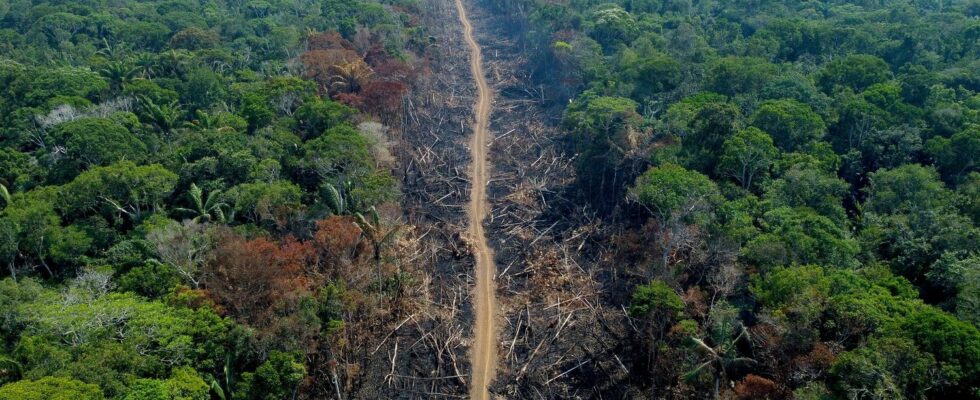The study confirms that trees release water vapor through their leaves, which can cause localized rainfall.
Article written by
Published
Reading time : 1 min.
From the Amazon to the forests of Africa and Southeast Asia, large-scale deforestation threatens to reduce rainfall in the tropics, according to a study published Wednesday (March 1) in the journal Nature. This document is published in full One Forest Summit, which brings together experts and leaders, including Emmanuel Macron, in Gabon. The Congo Basin, a crucial carbon sink and refuge for rare species (the second largest on the surface after the Amazon) is at the heart of the debates.
It is precisely in this region, over which hangs the threat of rapid deforestation in the years to come, that the risk of reduced rainfall is most acute, according to the study. They could be reduced by 10% by the end of the century, warn the researchers. “We could come to a point where rainforests can no longer renew themselves,” said lead author Callum Smith of the University of Leeds.
“Less moisture returned to the atmosphere”
Using satellite data collected from 2003 to 2017 in tropical regions of the Amazon, Congo and Southeast Asia, scientists have found that large-scale deforestation is disrupting the water cycle and leads to a significant reduction in rainfall, with the greatest losses occurring during the wet seasons. Trees release water vapor through their leaves, which can cause localized rainfall.
Previous research on small-scale deforestation, however, suggested that deforestation was likely to, conversely, increase rainfall in some areas. But on a large scale, there is “less humidity returned to the atmosphere, which reduces precipitation”, confirmed Callum Smith. It calls for increased conservation efforts, as research has shown that restoring vast forests that have been destroyed could partly reverse the phenomenon.
